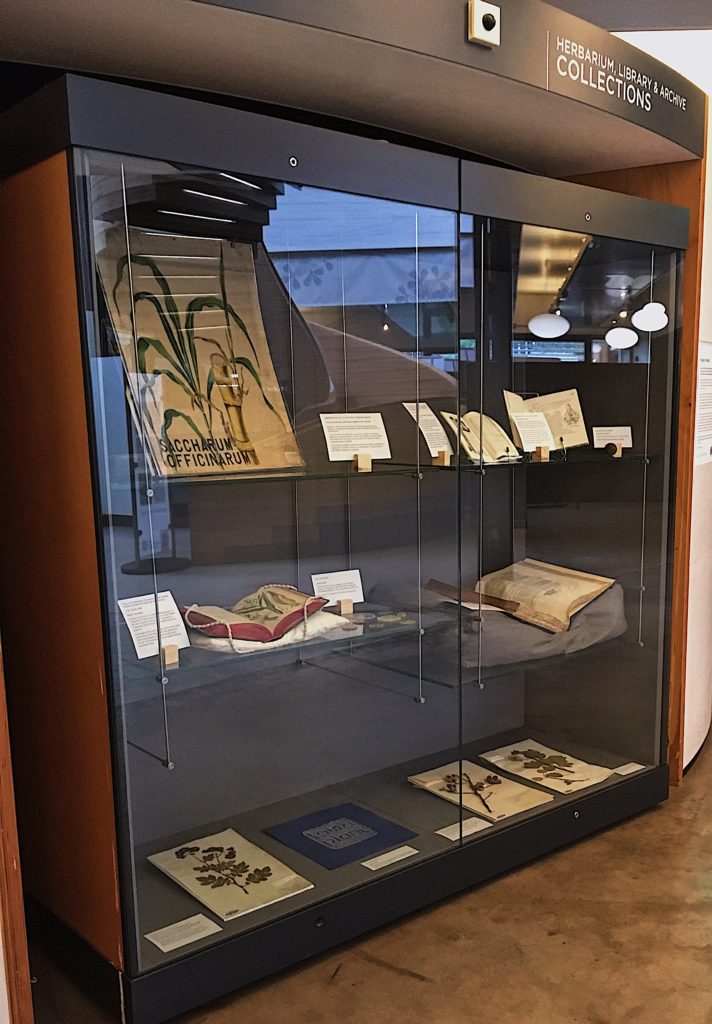Inspired by the Think Plastic: Materials and Making exhibition, Fields of Plastic is a display of items from the RBGE Collection in the Herbarium, Library & Archive Cabinet in the John Hope Gateway, showcasing the botanical origins of some alternatives to petroleum-based plastics. Substances derived from many familiar plants, including sugarcane, cotton, maize and potatoes, can be transformed into bioplastics.
The case also includes some test pieces by the artist Lorna Fraser, whose work appears in the Think Plastic exhibition.

One of the earliest natural plant ‘plastics’ is Gutta Percha, a substance similar to rubber, which derives from the Palaquium gutta tree, and can be moulded easily when heated. Heavy demand for Gutta Percha during the 19th century had devastating consequences in South East Asia, where forests of Palaquium gutta were felled for its extraction. Indeed, less than twenty years after Gutta Percha was popularised in the UK, creating products including insulation for deep sea telegraph cables, medical equipment and jewellery, RBGE Regius Keeper John Hutton Balfour warned of its ‘probable exhaustion’ ‘in the countries from which it is now supplied’.
Hutton Balfour’s words resonate today. While the plants displayed in Fields of Plastic hint at the amazing potential of bioplastics, caution is necessary when substituting one type of plastic for another. Many bioplastics take a long time to degrade and can involve toxic chemicals in their production. As demand for these bioplastics increases, so might the pressure to convert natural forest and land used for food production into areas for producing the raw materials for bioplastics.
Bioplastics may be part of the solution, but ultimately we need to rethink our disposable attitude towards plastic.

